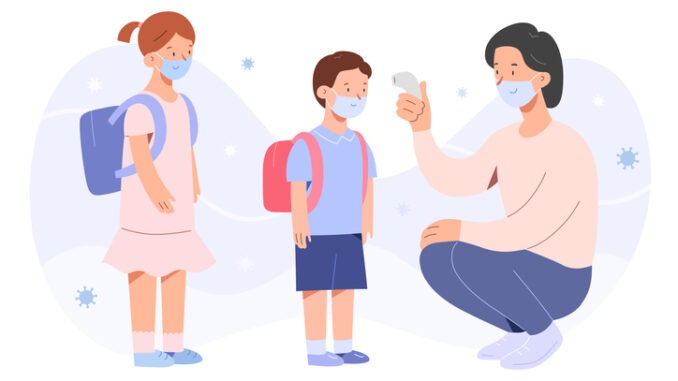
Primary-aged children produce about four times fewer particles than adults – which may help explain their lower transmission risk
CREDIT: This is an edited version of an article that originally appeared on The Guardian
Primary school-aged children produce about four times fewer aerosol particles when breathing, speaking or singing compared with adults, which could help explain why they seem to be at lower risk of spreading COVID.
Various studies have suggested that young children are about half as susceptible to catching COVID as adults and, despite carrying a similar amount of virus in their noses and throats, appear to pass it to fewer people if they do become infected.
One possibility is that the size and shape of their lungs and respiratory tracts means they emit fewer of the tiny airborne droplets called ‘aerosols’ as they breathe and speak. These particles can linger in the air, particularly in enclosed spaces such as classrooms, so fewer aerosols could mean other people are less likely to be infected if they also occupy those spaces.
In order to investigate this possibility, Dr Mario Fleischer of Charité University Medicine Berlin, and colleagues, recruited 16 healthy children aged eight-to-10 and used a laser particle counter to measure how many aerosol-sized particles they emitted when breathing at rest, and during speaking, singing and shouting.
The results, published in the Journal of the Royal Society Interface, suggested that shouting produced the most particles, followed by singing, speaking and then breathing; however, particle emission rates and volumes for singing, speaking and breathing were around four times lower for children, compared with measurements taken from 15 adults.
“More precisely, children emitted [particle rates and emissions] during speaking of the same order of magnitude as adults breathing, and while singing, they emitted similar [particle rates and volumes] to the adults while speaking,” Fleischer said. The amount of aerosols produced during shouting was more similar between both adults and children, however.
The authors also cautioned that there was considerable variation between individuals, and their results didn’t suggest that attending schools or after-school clubs was without risk. “Especially in constellations with high vocal loudness – which are common in the everyday life of children and adolescents – the aerosol emission could be similar for different age groups, as the measurements for the shouting condition show,” said Fleischer. “On the other hand, singing and talking at volumes typical for children might be less restricted if the time frame is limited, as in common school and extracurricular settings.”
He added that other factors, such as the number of children and the design of indoor ventilation, also mattered, and that further research was needed to inform any recommendations made to schools.


Be the first to comment